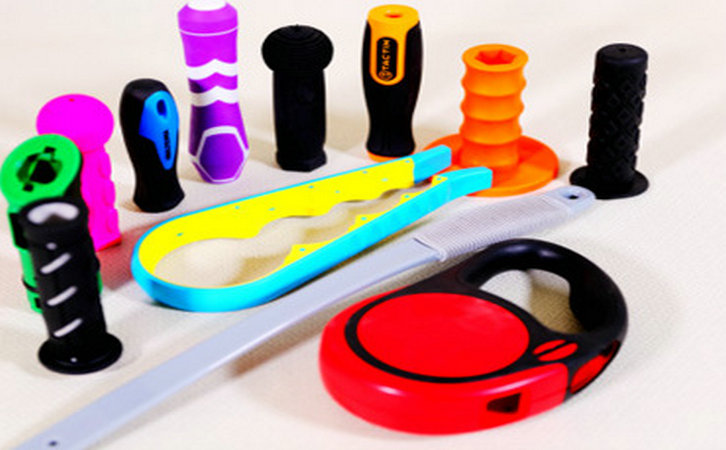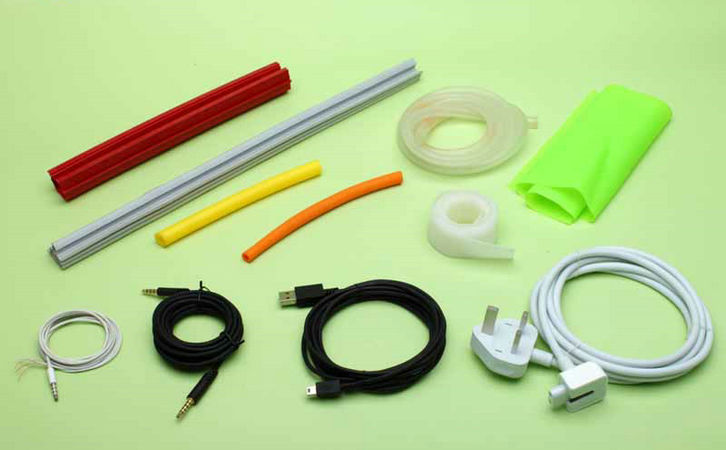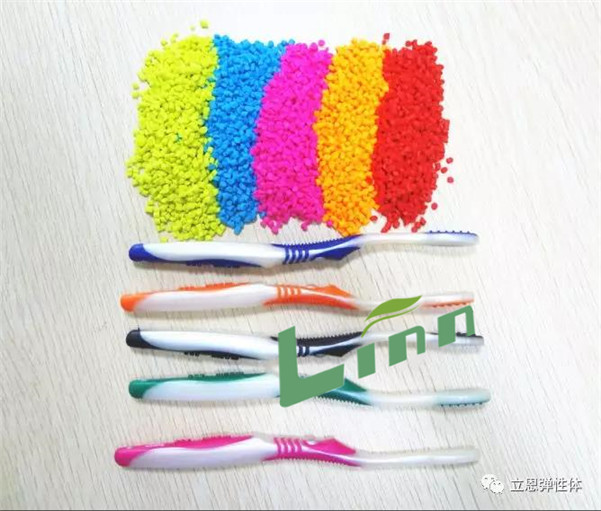As someone who has been deeply involved in the TPE (Thermoplastic Elastomer) industry for years, I understand the critical role every detail plays in the injection molding process. The design and placement of the gate, in particular, directly impacts product quality, appearance, and production efficiency. Today, I’m sharing my experience and industry insights to provide a comprehensive guide on how to design the gate for TPE products, aiming to equip you with practical knowledge and actionable steps.

Why Is Gate Design So Important?
The gate is the entry point where molten TPE material flows into the mold cavity. Its position, shape, and size influence material flow, cooling, and the final product’s quality. Poor gate design can lead to issues such as:
Flow marks or weld lines on the product surface, affecting aesthetics;
Uneven pressure distribution in the mold, causing deformation or dimensional inaccuracies;
Material waste or reduced production efficiency, increasing costs;
Incomplete filling or air bubbles in complex products, compromising performance.
Thus, a well-designed gate is not just a technical necessity but a cornerstone of ensuring high-quality output.
Core Steps for Designing TPE Gates
To help you master gate design, I’ve broken down the process into key steps, enriched with real-world examples and data.
1. Understand Product and Mold Requirements
Before designing the gate, I always start by discussing with the design team to clarify:
Product structure: Is it a thin-walled part, thick-walled, or a complex geometry?
Material properties: What is the TPE’s hardness (e.g., Shore 30A to 90A), flowability, and shrinkage rate?
Mold type: Single-cavity, multi-cavity, or hot runner system?
Production needs: Small-scale prototyping or high-volume manufacturing?
For instance, in a past project involving a TPE sealing ring with Shore 60A hardness and a 1.2mm wall thickness, the requirement was a flawless surface without visible flow marks. This meant the gate needed to be small and discreet while ensuring rapid cavity filling.

2. Select the Right Gate Type
The gate type determines how material enters the mold. Below are common gate types used in TPE injection molding, along with their characteristics and applications:
| Gate Type | Features | Applications | Pros and Cons |
|---|---|---|---|
| Pin Gate | Small gate (0.5-2mm diameter), material injected from a single point | Ideal for small, thin-walled, or high-aesthetic products | Pros: Minimal mark, easily hidden; Cons: High filling pressure, prone to clogging |
| Submarine Gate | Hidden on the product’s side, auto-sheared during ejection | Suitable for complex structures or parts requiring no post-processing | Pros: No manual gate removal; Cons: Complex mold machining |
| Fan Gate | Fan-shaped gate, ensures even material distribution | Best for large or flat products | Pros: Uniform filling; Cons: Larger gate mark |
| Direct Gate | Large gate connected to the main runner | Suitable for thick-walled parts with lower surface requirements | Pros: Fast filling; Cons: Obvious gate mark |
| Valve Gate (Hot Runner) | Controlled via hot runner system, precise injection | Ideal for high-precision or multi-cavity molds | Pros: No gate mark, high efficiency; Cons: High cost |
When choosing, I weigh the product’s needs and budget. For the sealing ring project, we opted for a submarine gate to enable auto-shearing, reducing post-processing while maintaining appearance.
3. Determine Gate Position
Gate placement is a critical decision that affects material flow and product quality. I follow these principles:
Near the geometric center: Ensures even filling and minimizes weld lines.
Avoid visible surfaces: Place gates on hidden areas like the inner side or edge.
Facilitate venting: Position gates to allow easy gas escape, preventing air bubbles.
Avoid weak areas: Steer clear of thin walls or stress-concentration zones.
For a TPE handle with a curved aesthetic surface and a functional inner hole, we placed the gate at the hole’s edge, preserving the outer appearance while enabling uniform flow from the inside out.

4. Calculate Gate Size
Gate dimensions must be calculated based on the TPE’s flowability and product size. Here are my go-to guidelines and data:
Pin gate diameter: Typically 0.5-2mm, smaller for thin-walled parts, larger for thick-walled ones.
Fan gate width: 1/10 to 1/5 of the product’s width.
Gate thickness: 0.5-1 times the product’s wall thickness.
For example, with a 1.5mm wall thickness and a TPE with moderate flowability (Melt Flow Index, MFI, of 20g/10min), I might design a 0.8mm pin gate. For a fan gate, the width could be 1/8 of the product’s width, with a 1mm thickness.
TPE flowability varies with hardness. Softer TPEs (e.g., Shore 30A) have poorer flow, requiring slightly larger gates, while harder TPEs (e.g., Shore 90A) flow better. According to Facile, a trusted TPE resource, gate sizes for low-hardness TPEs should be 10-20% larger than standard recommendations to ensure proper flow .
5. Optimize Mold Design and Machining
Gate implementation relies on precise mold fabrication. I work closely with mold makers to ensure:
Smooth gate edges: Prevent burrs or sharp corners that impede flow.
Cold slug well: Include a well near the gate to trap initially cooled material, ensuring uniform cavity temperature.
Effective venting: Add vent slots opposite the gate or at cavity ends to avoid air entrapment.
In one project, we noticed tiny air bubbles on the product surface due to insufficient vent depth. After adjusting, the issue was resolved.
6. Test and Refine
After designing the gate, mold trials are essential. I analyze trial results and adjust based on:
Incomplete filling: Enlarge or reposition the gate if filling is insufficient.
Flow marks or weld lines: Adjust gate position or add auxiliary runners.
Excessive gate marks: Switch to a submarine gate or reduce gate size.
Testing requires patience, sometimes involving multiple mold revisions. I always document each adjustment to build a knowledge base for future projects.

Practical Tips and Considerations
Here are some tips from my experience to enhance your gate design:
Use simulation software: Tools like Moldflow can predict material flow, optimizing gate placement early.
Control injection parameters: TPE molding temperatures range from 160-220°C, with pressure and speed tailored to the material and mold.
Maintain molds regularly: Gates can accumulate residue, so clean them periodically to prevent clogging.
Ensure draft angles: Include 1-3° draft angles near the gate for easy part release.
Case Study: Turning Failure into Success
A few years ago, I worked on a TPE phone case project. Initial trials revealed prominent weld lines on the surface, disappointing the client. Analysis showed the issue stemmed from the gate’s position—a pin gate at the product’s center caused uneven flow due to the case’s irregular shape.
We revised the design, switching to a submarine gate on the side and adding two auxiliary runners to ensure rapid filling. After three trials, the weld lines disappeared, and the client was thrilled with the final product.
Frequently Asked Questions
To provide a well-rounded guide, I’ve compiled answers to common gate-related questions:
Q1: What to do if the gate clogs?
A: Clogging often results from material degradation or mold residue. Check if the molding temperature is too high (to avoid carbonization) and clean the gate area regularly. If persistent, consider enlarging the gate or using a hot runner system.
Q2: How to minimize gate marks?
A: Opt for submarine or valve gates to reduce visible marks. For budget constraints, place pin gates on hidden surfaces and use post-processing like polishing to refine appearance.
Q3: Does gate design affect production efficiency?
A: Yes. Small gates can slow filling, reducing efficiency, while oversized gates waste material. Balancing quality and efficiency through testing is key.
Q4: How do TPE and TPU gate designs differ?
A: TPU generally has poorer flow than TPE, especially high-hardness TPU. TPU gates should be 10-15% larger, with higher injection pressure.
Q5: Is a hot runner system worth it?
A: For high-volume or precision products, hot runners boost efficiency and quality, eliminating gate marks and waste. However, the high initial cost suits projects with stable orders.
Final Thoughts
Gate design may seem like a small part of the injection molding process, but it embodies the interplay of material science, mold engineering, and process optimization. As a practitioner, I’ve learned that every successful design stems from meticulous analysis, iterative testing, and teamwork. I hope this guide offers you practical insights to navigate TPE gate design with confidence.
Feel free to share your gate design questions in the comments! Whether you’re a beginner or a seasoned pro, let’s exchange ideas and grow together.





